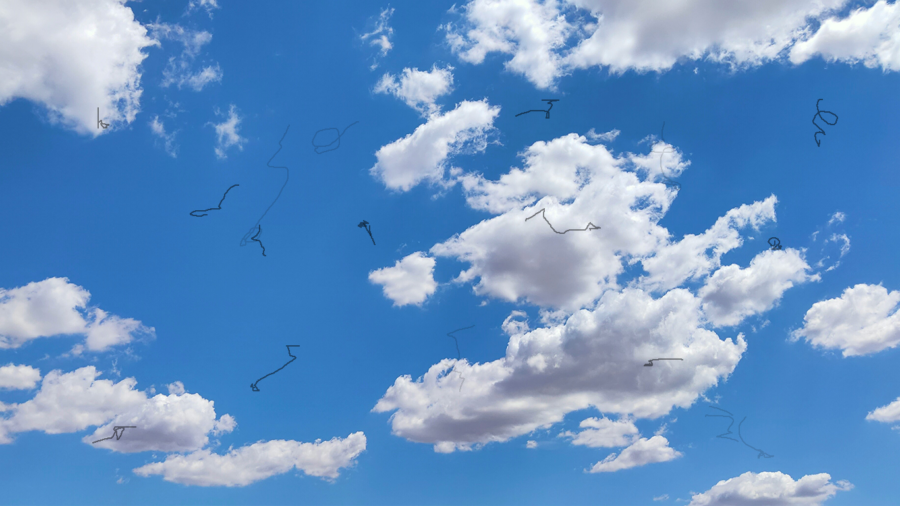Have you ever experienced small shapes or specks floating through your field of vision? These phenomena, known as eye floaters, are surprisingly common and play a significant role in understanding eye health.
Eye floaters are small, shadowy shapes that appear in your field of vision, often described as spots, threads, or cobweb-like images. They are caused by tiny pieces of the eye’s gel-like vitreous breaking loose within the inner back portion of the eye. Floaters are most noticeable when you look at a plain, bright background, like a blue sky or a white wall. While they can be annoying, eye floaters are generally harmless and only rarely require medical treatment.
What do Eye Floaters Look Like?
Eye floaters often appear as small, shadowy shapes that drift through your field of vision. They can take various forms, such as:
- Tiny dots or specks
- Squiggly lines
- Thread-like strands, which can be knobby and almost transparent
- Cobweb-like webs
- Small shadowy shapes or semi-transparent, greyish clouds
Floaters are particularly noticeable when you’re looking at a plain, bright background, like a blue sky or a white wall. They move as your eyes move, seeming to dart away when you try to look directly at them, and drift slowly when your eyes stop moving.
What are Eye Floaters?
Imagine your eye as an advanced camera, with the vitreous humor acting as a gel-like substance in the rear chamber, playing a crucial role in the eye’s shape and nutrition. With age, this gel undergoes transformations, sometimes clumping together and casting shadows on the retina — the light-sensitive screen of the eye. These shadows are what we perceive as eye floaters.
Exploring Eye Anatomy and the Role of Vitreous Humor
To better comprehend eye floaters, a quick dive into the eye’s anatomy is helpful:
- Cornea: The transparent front layer that helps focus light.
- Lens: Adjusts focus, fine-tuning light onto the retina.
- Iris: The colored ring that regulates pupil size.
- Pupil: The gateway for light entry.
- Retina: Captures light, transforming it into neural signals for the brain.
- Vitreous Humor: A gel-like substance filling the space between the lens and retina, where floaters originate.
Thus, eye floaters are essentially tiny shadows cast on the retina by particles within the vitreous humor.
Types of Eye Floaters
Floaters vary in appearance, ranging from transparent, web-like structures to darker shadows. Their forms include:
- Thread-like or Worm-like: Resembling cobwebs.
- Circular or Ring-like: Manifesting as loops or halos.
- Dotted or Blob-like: Small specks akin to dust particles.
- Amoeba-like: Irregular shapes with undefined edges, constantly shifting.
What Causes Eye Floaters
Aging stands out as the primary culprit due to changes in the vitreous humor. However, other factors include:
- Posterior Vitreous Detachment (PVD): The vitreous humor separates from the retina, possibly leading to more floaters.
- Retinal Tears and Detachment: Serious conditions that may follow PVD, demanding urgent medical care.
- Uveitis and Inflammatory Conditions: Inflammation within the eye can also result in floaters.
Eye Floater Treatments
While most floaters are harmless, significant vision obstruction may require intervention:
- Laser Therapy (Laser Vitreolysis): A non-invasive approach to reduce the visibility of floaters for some patients.
- Vitrectomy Surgery: For severe cases, this procedure removes the vitreous humor, replacing it with a saline solution, although it carries certain risks.
How to Prevent Eye Floaters
Entirely preventing floaters may not be possible, but maintaining excellent eye health can lower risks:
- Routine Eye Exams: Regular check-ups with an ophthalmologist are crucial.
- UV Protection: Sunglasses that block UVA and UVB rays help protect your eyes.
- Healthy Living: A balanced diet, adequate hydration, and stress management support eye health.
Recognizing and managing eye floaters is vital for maintaining eye health. Whether encountering floaters for the first time or dealing with them regularly, consulting an eye care professional is essential for thorough care and guidance.







